How do I... - Friday 02 June 2023
Legal information research

This zoom is a reminder, for non-lawyers, of the main principles governing the law, and more specifically commercial law: where the law is written, how it is applied, how it is accessed... This zoom does not cover legal, administrative and financial information for companies, for which resources such as Infogreffe, Orbis and Diane can be consulted.
Let's take a concrete case of legal information research for the launch of a new product in the alternative health sector, herbal medicine, in two European countries simultaneously: France and Greece.
Broadly speaking, there are several branches of law, present in different geographical areas.
- International law: rules governing international relations.
- Community law: rules applying to the institutions, member states and nationals of the European Union.
- National domestic law: the body of legal rules governing social relations within a given state.
The diagram of the different branches of law below was inspired by the Université Numérique Juridique Francophone (UNJF) website, which outlines the main legal concepts.
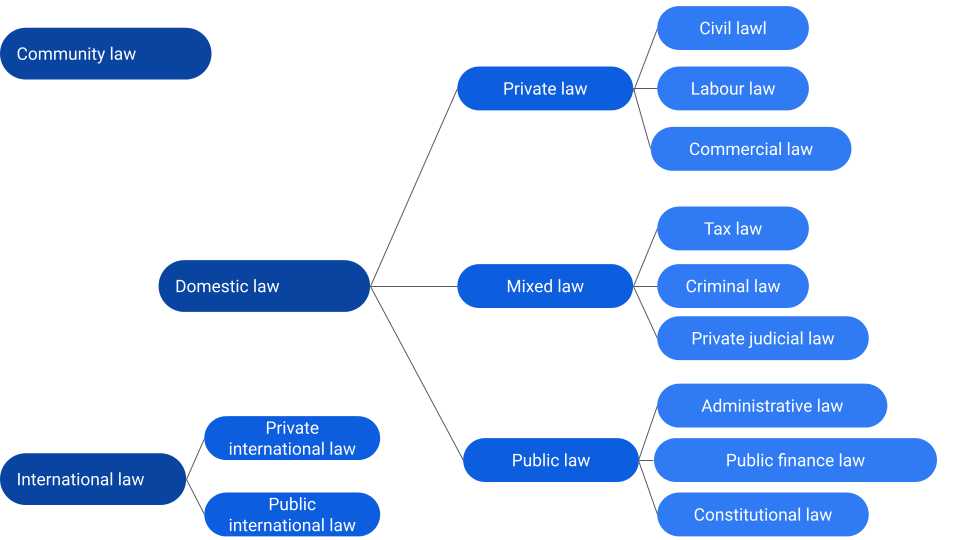
There are different sources of law:
- Legislation: all normative texts = laws and regulations.
- Case law: all legal decisions handed down by constitutional, judicial or administrative jurisdictions
- Dalloz or Lexis360
- Doctrine: legal commentaries on a legal issue
- Dalloz, Lexis360. Legal journals contain doctrine.
These sources are ranked as follows:
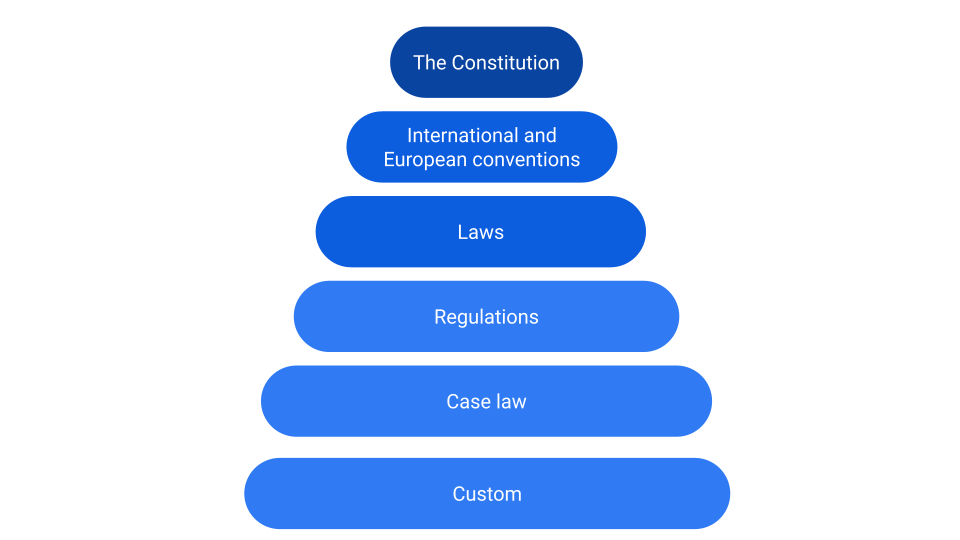
Directives, for example, are derived European law (apart from the founding texts and other treaties, charters or principles, and international agreements forming primary law), but they are binding legal acts. Any company operating in the sector will therefore have to comply with these texts. However, while they concern all EU countries (26 since the Brexit), they do not apply at the same time in all countries, nor in the same form. Of course, we can also look to European regulations, which apply directly and at the same time.
European legal texts are published in the Official Journal of the European Union (OJEU), which can be searched on the Eur-Lex website. Let's look for the directives that apply or will apply to our specific case, and the doctrine that will enable us to understand their effects.
Eur-Lex is freely available online, but to find commentaries and doctrine, you generally have to turn to subscription databases such as Lexis-Nexis.
A search on the term phytotherapy in Eur-Lex doesn't give too many results: 39 in a simple search on Eur-Lex. This will not be the case for all searches, so use the advanced search.

Browsing through these results does not give you an idea of the legislation applying to the herbal medicine sector in Europe, and more specifically in France. You will need to consult the Dalloz or Lexis databases, in the encyclopedia, summary or educational sheet sections, for a useful overview. However, the national law of countries other than France is not accessible via these databases.
 |
3 main subscription-based resources accessible via the K-lab:
Our guide on legal information will help you find out:
|
The first result of a simple search on Lexis Nexis, a “fascicule” (a set of coherent texts extracted from the Lexis-Nexis encyclopedic collections), will provide an overview of the subject::

We'll see which European directives apply in the phytotherapy sector:
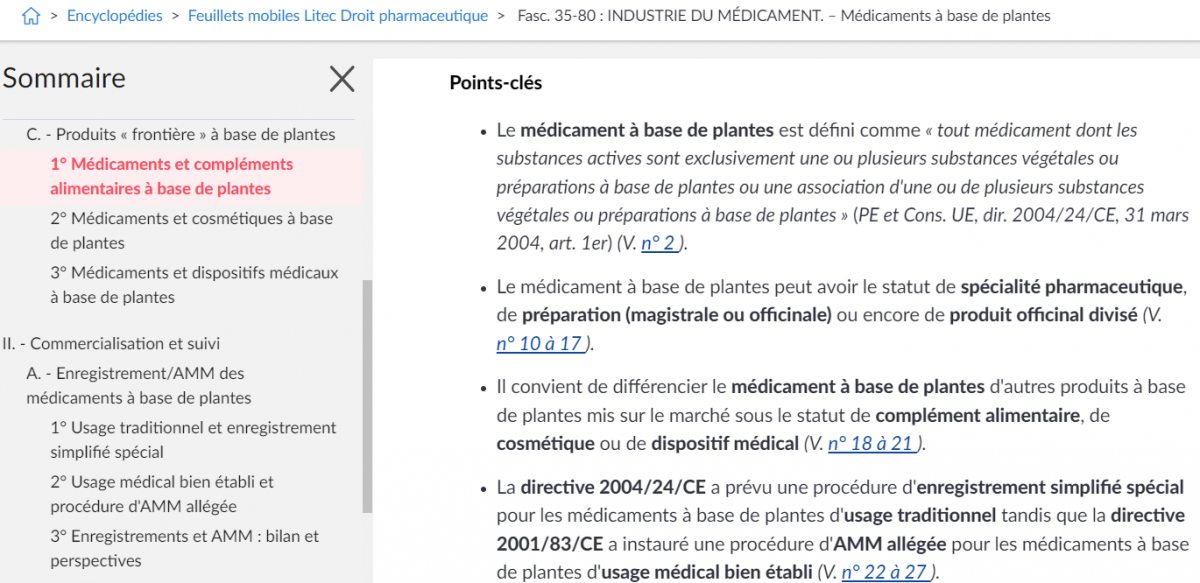
If we now want to search for this text: Directive 2002/46/EC of the European Parliament and of the Council of 10 June 2002 on the rapprochement of the laws of the Member States relating to food supplements 66 (Text with EEA relevance) (OJ L 183, 12 July 2002, page 51), we can turn to institutional sites providing public access to (French, European) law:
- Légifrance
- Vie publique (fiches thématiques)
- Eur-Lex

Here's how to carry out an advanced search for legal documents on Eur-Lex:
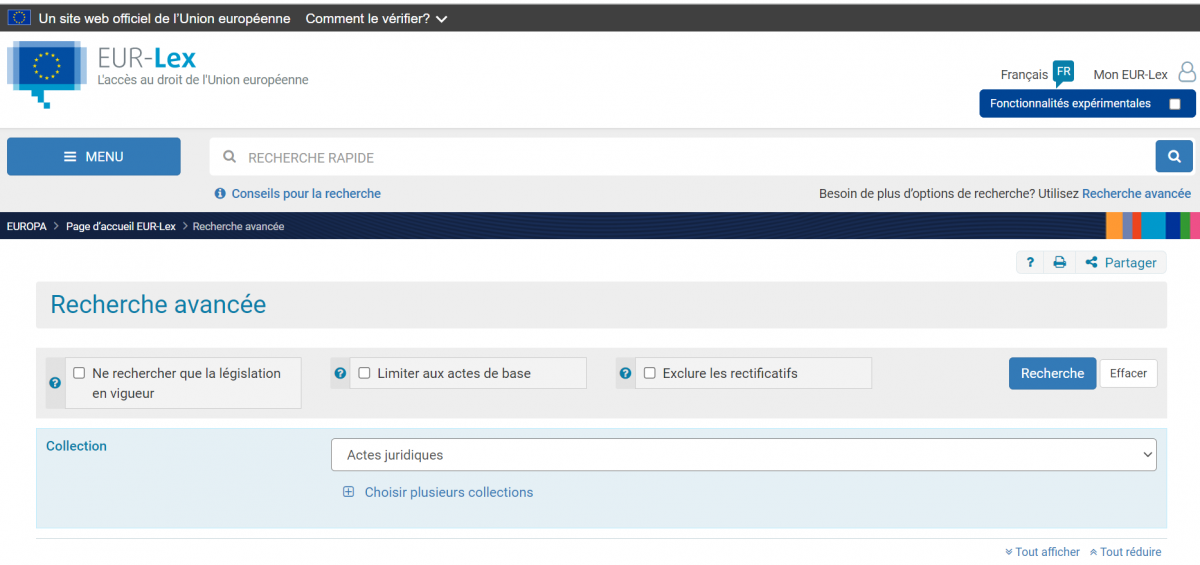
Tick the type of document Directive, indicating its year and number:

The only result we find is the directive we're looking for:
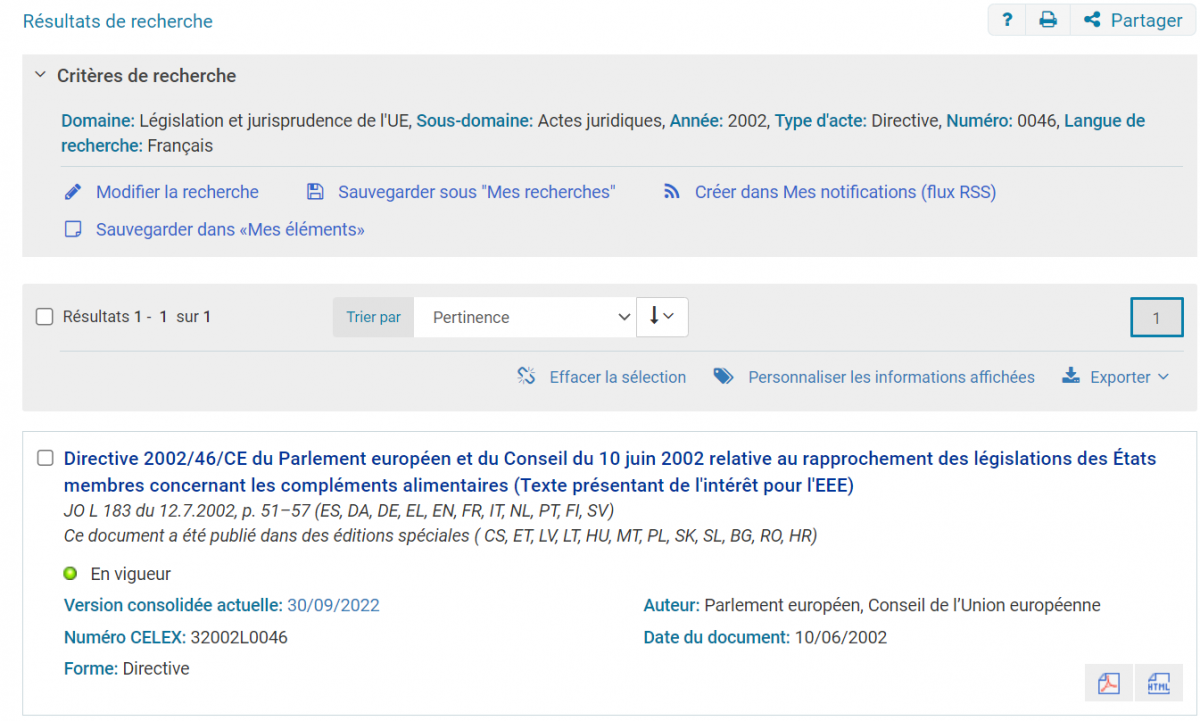
On the detailed directive sheet, we can consult its transposition by EU country, in particular France and Greece:
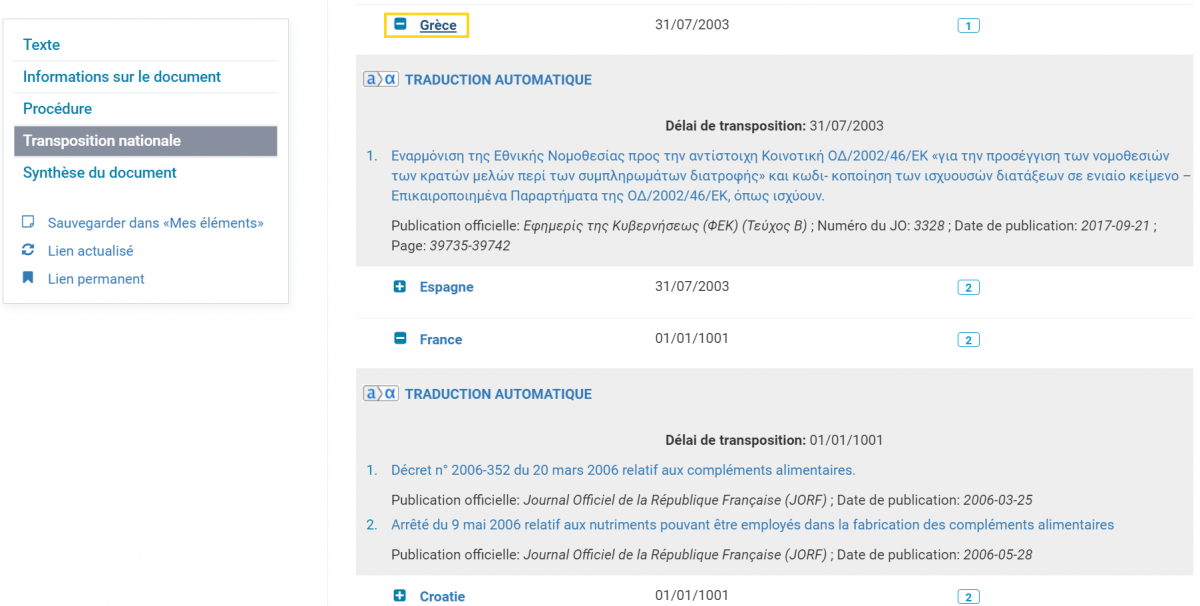
To complete this zoom, here is a list of legal abbreviations drawn up by the University of Toulouse.



